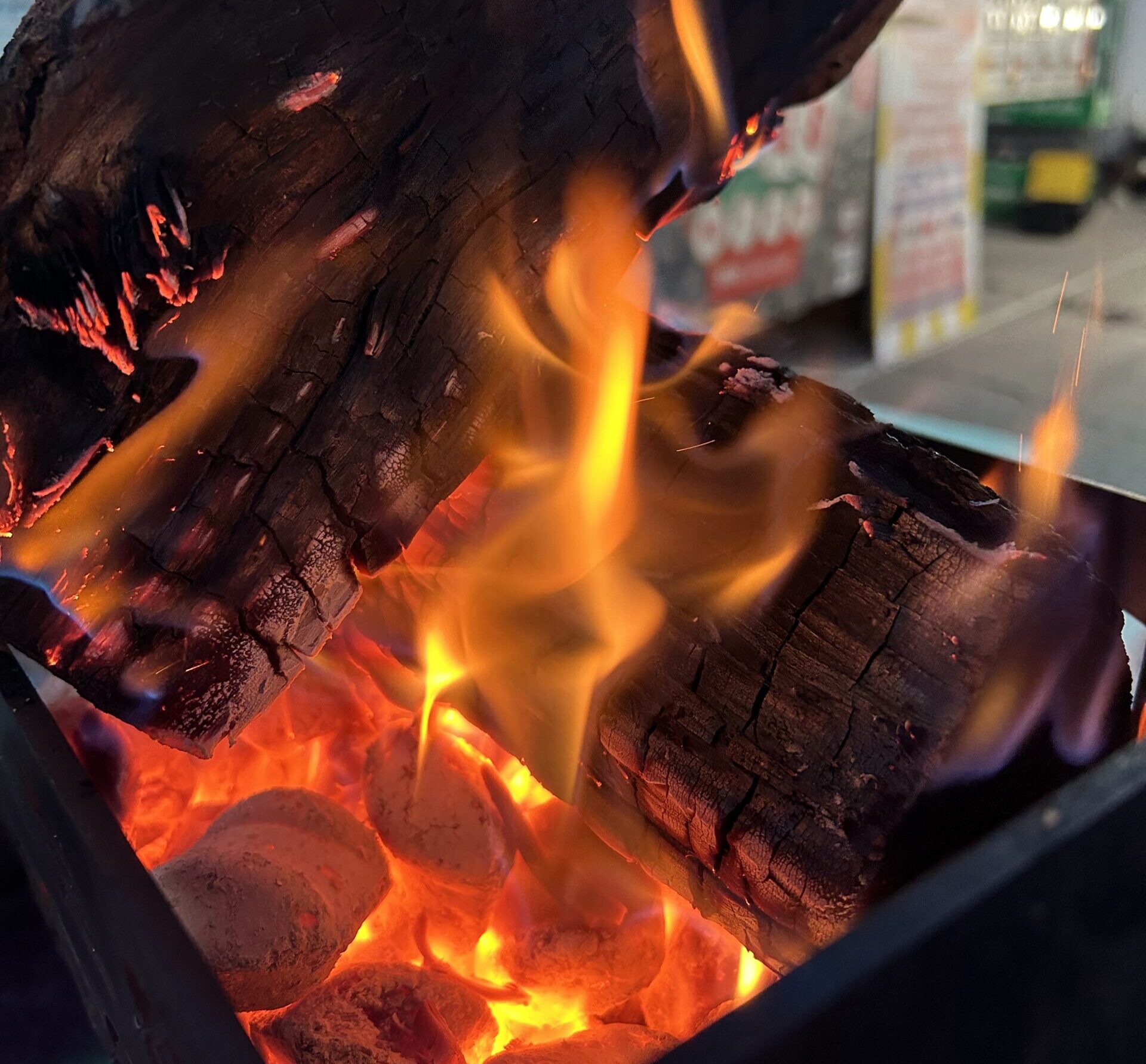The Smoked Turkey Tradition

How to Find the Right Fuel for Your Fowl
Barbecue season has fast become a year-round event guaranteeing great memories for all involved. It is a time filled with the smell of wonderful smoke flavors shared with family and friends. The larger pieces of protein such as turkeys have always been perfectly suited for festive parties, holidays and special occasions.

A little bit of backstory reveals the native American turkey has long preceded our current backyard barbecues. Thousands of years before the arrival of European livestock (beef, pork, lamb) the turkey was the largest domesticated animal bred for human consumption in America. The turkey was featured on Native American pottery and often presented to the original colonists and explorers.
After the continental cultural exchange, the farm-raised turkey became so popular it eventually overtook the traditional Christmas goose in European societies. Just a few hundred years ago, the roasted turkey started appearing on tables of kings and commoners across Europe for almost every occasion. If there was a wedding, banquet, holiday or open-air festival, there was sure to be turkey served. Turkeys are easy to farm and hunt, are quick to prepare and provide enough food to feed a crowd.
But back to the main point. Prepping your grill for a turkey does not need to be complex, but to really master the art of cooking over the coals, one must understand, well…the coals.
The secret to successful outdoor cooking all year around is controlling variables, the most important of which is heat. The first thing to consider when cooking outdoors is determining your fuel source. Gas, electric, pellet, charcoal, split wood or a deep fryer all will cook your turkey differently and each method should be approached accordingly. However, charcoal cooking stands out because of the additional taste profile authentic smoke flavor can provide. There are two options for charcoal cooking: lump charcoal or charcoal briquettes. Both fuel types offer more than enough heat to cook a delicious turkey, and each have their own advantages and disadvantages. To find out which type is right for your next cookout, you need to know the differences between them.
Lump Charcoal

Lump charcoal is made from pieces of wood that have been burned down into almost complete pieces of carbon in specially designed low air furnaces. The carbonized charcoal chunks are packaged as they are. Lump charcoal is considered completely natural because there is no additional processing done to the lump wood pieces. There are different types and sources of wood used to make lump charcoal, including sawmill scraps (wood scraps from lumber industry), industrial scraps (end cuts and leftover pieces of furniture/bed frames or wood floor scraps) and naturally cut hardwood trees. The most popular types of wood used are oak, hickory, walnut, alder and mesquite. There are other types of lump charcoal such as quebracho, bintochotan, coconut, kiawe and eucalyptus wood. Each type of wood will burn at different rates and temperatures and will give off distinctive smoke flavors. Lump charcoal will burn hotter and faster but will also burn inconsistently due to the different shapes and sizes of the product. Lump charcoal will burn cleaner and produces less ash waste. It will create an authentic wood smoke flavor that most pit masters consider the final ingredient to award-winning barbecue.
Pros:
- 100% natural, no chemicals, or additives
- Ignites fast and easy to adjust temperatures
- Distinctive smoke aromas
- Higher surface temperatures (up to 1200°F)
- Burns cleaner with less ash waste
Cons:
- More expensive to buy and operate (breakage in bag, fast burning)
- More fire management, inconsistent size, and shapes
- Harder to predict smoke profile in blended hardwood types
- Harder to find and purchase
Charcoal Briquettes
Charcoal briquettes are a manufactured product that can be made up of several different ingredients, including wood char, coal, nitrates, lime, starch, minerals and borax. Briquettes are made by heating wood scraps in oxygen-controlled ovens that convert wood into carbon. The carbon char is pulverized and then starch binder agents, limestone, and other minerals (sodium nitrate, borax, fillers and flavor components) can be added. All these ingredients are compressed in high-pressure molds to form the briquette. The best materials to use are hardwoods such as beech, birch, maple, hickory and oak. Briquettes are made to burn longer and more consistently than lump charcoal, but not as hot. The specific temperature rate enables you to control the cooking process and set distinct heat zones or extend the burning time. Briquettes are less likely to break apart in shipping, so you can use 100 percent of the contents of the bag. Consistent and predictable are the hallmarks of cooking with briquettes and a key factor to producing great-tasting food. Briquettes are a convenient, reliable and inexpensive source of fuel.

Pros:
- Burns for a longer time rate
- Burns at consistent temperatures
- Cost less to buy and operate (less breakage)
- Easier to locate and purchase
Cons:
- Takes longer to light
- Creates more ash waste
- Lower surface temperatures (600-800°F)
- Less smoke flavors
- Extra additives give chemical and acidic smell/taste
In the end, when selecting an outdoor cooking wood, it is important to buy the best quality and know what options will deliver your desired results. Turkey absorbs smoke easily so experiment with different types of wood to make a unique taste profile.
Create your own smoked turkey tradition today!














